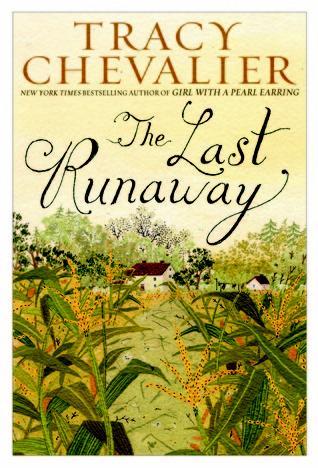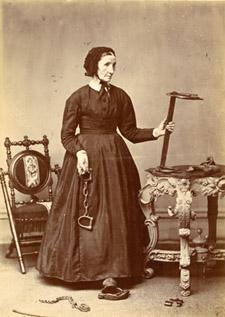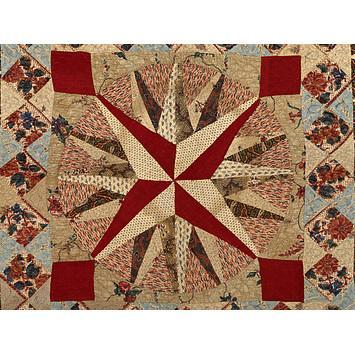 I’m thrilled to welcome author, Tracy Chevalier, of The Last Runaway and Girl With a Pearl Earring. The review I posted for The Last Runaway can be found here, and I hope to have posted the review for Girl With a Pearl Earring this month. The Last Runaway was such a fabulous novel written about a time period and culture that few have focused on before. Learning more about the Quaker lifestyle and their involvement with the Underground Railroad was fascinating to me. And discovering a bit more about the author behind the book was a thrill for me! Enjoy!
I’m thrilled to welcome author, Tracy Chevalier, of The Last Runaway and Girl With a Pearl Earring. The review I posted for The Last Runaway can be found here, and I hope to have posted the review for Girl With a Pearl Earring this month. The Last Runaway was such a fabulous novel written about a time period and culture that few have focused on before. Learning more about the Quaker lifestyle and their involvement with the Underground Railroad was fascinating to me. And discovering a bit more about the author behind the book was a thrill for me! Enjoy!
Your previous novels were all set in Europe. What made you decide to choose America, and more specifically, Ohio, as the setting of The Last Runaway?
I moved to England right after I graduated from college, and have spent 28 years getting used to living in Europe. During all that time I’ve felt a bit of an outsider, even though I now have a British passport and an English husband and son, and have lived in England longer than anywhere else. That outsider status helped me when it came to writing: when you’re standing on the sideline rather than playing in the game, you perhaps have more perspective. Now it seems I’ve been away from America long enough to feel less attached, and more objective, so I am ready to write about it.
I chose Ohio specifically because it was the state where the Underground Railroad was the most active. It was also a crossroads state, with lots of movement from south to north and from east to west. Ohio served as a gateway for easterners heading west. It’s still an interesting state, with a curious identity different from the rest of the country. A mix of east and Midwest, it is often presented as the boring place everyone wants to leave, yet it has the power to elect a President. In fact, seven Presidents have come from Ohio, as well as Neil Armstrong, Orville Wright, Steven Spielberg, Toni Morrison, Gloria Steinem. I think it’s a fascinating state.
Of course it helps that I went to Oberlin College, so I know the setting a little. Since its founding Oberlin has been a radical place, admitting African Americans and women among its first students, flying the flag for progressive thought. It was an important stop on the Underground Railroad. In fact, there is one of Toni Morrison’s Benches by the Road in Oberlin, marking it as a place of historical significance for African Americans. I happened to be at Oberlin when she unveiled the bench in April 2009, and that was what first gave me the idea to write The Last Runaway.
Why did you choose to feature a young Quaker woman as your protagonist?
A couple days after I saw Toni Morrison unveil the Bench, I went to a Quaker meeting, where people sit together in silence. I went to a Quaker camp as a kid, and I still go to Meeting sometimes. There I kept thinking about the Bench by the Road, about the incredible journeys African Americans had to make to escape slavery and find freedom, and how Quakers helped them along the way. It made me wonder if I could make my main character a Quaker, and what it would be like to write a heroine who is very quiet and who always tells the truth (Quakers are not meant to lie).

Laura Smith Haviland with Slave Irons ~ Quaker woman believed to have first Underground Railroad Station in Michigan
Many readers might be unfamiliar with the role Quakers played in the Underground Railroad. Did women like Honor Bright really exist?
Honor herself is made up, but lots of Quakers worked on the Underground Railroad. The “President” of the Underground Railroad was a Quaker called Levi Coffin, who lived in Cincinnati and then Indiana.
Indeed, the abolitionist movement was largely begun by Quakers. Slavery went against their belief in the equality of all people, and in the 1820s they began organized protests that grew into abolitionism.
What do you think are the most common misconceptions about the Quaker religion/Quaker society?
People often mistake Quakers for the Amish. Both are Protestant sects, but the Amish are much different from Quakers, eschewing modern technology (electricity, cars, etc.) and keeping separate from society. When you think of a man with a beard and flat hat and a woman with a white cap, riding in a horse-drawn buggy: that’s Amish.
Quakers were and are much more worldly: they used to dress plainly but not radically (the Amish, on the other hand, prohibit buttons, using pins instead), they used new inventions, they often lived and worked among non-Quakers. Quakers were known to run honest businesses, and some English Quaker families (Cadbury, Sainsbury) became very wealthy, which is also not how most people would characterize them.
I expect people also think of Quakers as not being much fun, as they didn’t drink, dance, play games. (That has since changed!) It’s true they were rather more sober than other communities, but they had their moments.
What did you find most surprising during your research for this novel?
I spent a bit of time in Ohio, of course, and one of my favorite moments was visiting an Amish farm. As I mentioned above, the Amish and Quakers are very different, but I needed to look around a farm that was still run in a 19th-century way, and an Amish farm was perfect for that. A farmer woman named Maddie took me around all the farm buildings and to see the animals, and patiently answered my 21st-century city-girl questions. Bare feet, a huge family, bare rooms, hundreds of chickens, jars and jars of vegetables, mud, animal stench, the biggest damn barn full of hay, a massive corn crib: I was in heaven in terms of research. I couldn’t take photos, so I just stared.
The most surprising and upsetting part of my research was discovering that, as principled as they were, Quakers were as fallible as others. Early Quakers kept slaves: who knows how they justified that with their beliefs. Moreover, though there were some black Quakers, for a time they were expected to sit on the “Negro pew,” separate from white Quakers. I was stunned by the unquestioned prejudice. On the other hand, it made for a much more textured novel, since the book is really about principles compromised by reality. Quakers may have wanted everyone to be treated equally, but they did not want their daughters sitting next to black men, and didn’t consider this a contradiction. Curious. That sort of thing has made The Last Runaway more complicated, and more subtle, I hope.

Hand Quilted 19th Century “Bed Cover”
Why does quilting play such an important role in the story?
I always look for things that characters can do in my books. People made stuff much more than we do now, and those activities can be quite revealing of character. Quilting is one of those skills that most women possessed, and it seemed the perfect activity to focus on, as English and American women both did it and yet came up with such different styles. English patchwork is sober and precise, American appliqué more garish and quicker to make. Then there are the African American-style quilts arising out of hardship and a make-do, improvised attitude that have found their apogee in the Gee’s Bend quilts now so celebrated. They couldn’t be more different from English patchwork, and it was a handy way of pointing up differences in the characters in The Last Runaway.
I worked hard to avoid making quilts into a metaphor – life as a patchwork, blah blah blah. Instead I tried to focus on the making itself, the planning and stitching, the social side of it, and the practical warmth. Also quilts as commerce: how many a bride needed, what they are worth in terms of time. I loved all that stuff, it’s gritty rather than sentimental.
Of course in order to write about quilts, I had to learn to make them myself. I do that with every book: fossil hunting for Remarkable Creatures, button-making for Burning Bright, painting for Girl with a Pearl Earring. It makes it easier to write about when you do it yourself.
What do you hope readers take away from The Last Runaway?
Though I try to avoid being prescriptive in my books, with this one I hope readers will have a better sense of how hard it is to live a principled life in the face of practical realities. We all like to think we will do the right thing when faced with injustice, but it can be hard to take a stand. Someone usually pays for it.
Also, people are not really “goodies” or “baddies.” Villains usually have a balanced side to them, and good people can be irritating and hypocritical. It’s not all black and white.
Any plans to return to America for the setting of your next novel?
I loved writing about America, but I am not yet sure where my next book will be set. I’m not entirely sure it will all be set in the past, either. All I know is that it will feature trees. I’m toying with the idea of following trees that were transported back and forth between the USA and Europe, but it’s still early days.
To read more about Ms. Chevalier visit her website. Connect via Twitter. Connect via Facebook.